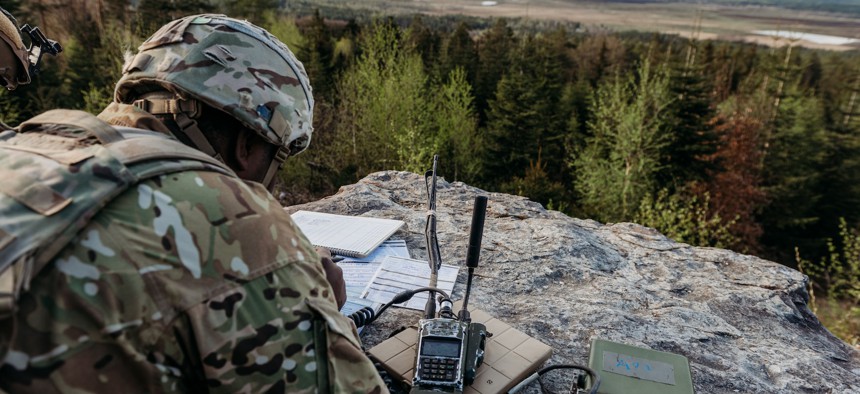
Citing the hundreds of drones that flew around military sites last year, defense officials warn that the Pentagon is still unprepared to defend its installations—but say a new standard operating procedure, and expanded authorities, could help.
“Mass drone incursions over Joint Base Langley-Eustis in December 2023 reminded us that the homeland is no longer a sanctuary, and should our adversary choose to employ drones for surveillance or even attack, we would not be prepared to adequately defend our homeland and only marginally capable to defend our military installations,” Rear Adm. Paul Spedero, vice director for operations for the Joint Staff, said Tuesday during a House oversight subcommittee on military and foreign affairs hearing.
The mysterious drone swarms over Langley Air Force Base in Virginia in 2023 raised questions about when base commanders can legally take down drones, and how the military should coordinate with the various agencies that oversee U.S. airspace.
In addition to Langley, Spedero cited drone incursions at Plant 42 in California and Picatinny Arsenal and Naval Weapons Station Earle in New Jersey. The Pentagon reported 350 drone detected last year over 100 different military installations—a number that continues to rise, Spedero said.
Officials have been hesitant to confirm who is behind these flights, but some lawmakers have pointed to the work of foreign adversaries like China or Russia, while some defense officials have pointed to local hobbyists.
Rep. William Timmons, R-S.C., the chairman of the subcommittee, called the drone incursions “a coordinated effort by our adversaries to collect valuable intelligence and surveillance of some of our most sensitive military equipment.”
While Spedero stopped short of naming specific instances of adversarial spying, he agreed that U.S. adversaries have “demonstrated that they will use this type of activity, for unauthorized surveillance, for espionage.”
Part of the Pentagon’s struggle to respond to these incidents lies in “challenges” with “our ability to implement a relatively untested interagency coordination process,” Mark Ditlevson, acting assistant secretary of defense for homeland defense and hemispheric affairs, said during the hearing.
In an effort to address some of the confusion, Spedero said that Gen. Gregory Guillot, head of North American Aerospace Defense Command and U.S. Northern Command, published a “standard operating procedure” last month—essentially a guide for base commanders to request assistance from USNORTHCOM when there’s a drone incursion. The DOD last year announced that NORTHCOM will serve as the “synchronizer, integrator, and/or coordinator” of counter-drone efforts.
The Pentagon is also hoping Congress will approve a legislative proposal to revise counter-UAS authorities under a U.S. law called Section 130i, which governs current authorities for “protection of certain facilities and assets from unmanned aircraft.”
The new legislation would expand the authorities under 130i to cover all military installations. As the law currently stands, only some bases—“covered installations”—have permission to defend themselves against drones. In addition to covering all DOD installations, the new legislation will “facilitate data sharing” with interagency partners to improve coordination, Ditlevson said.
The post Pentagon warns it’s not prepared for homeland drone attack appeared first on Defense One.




